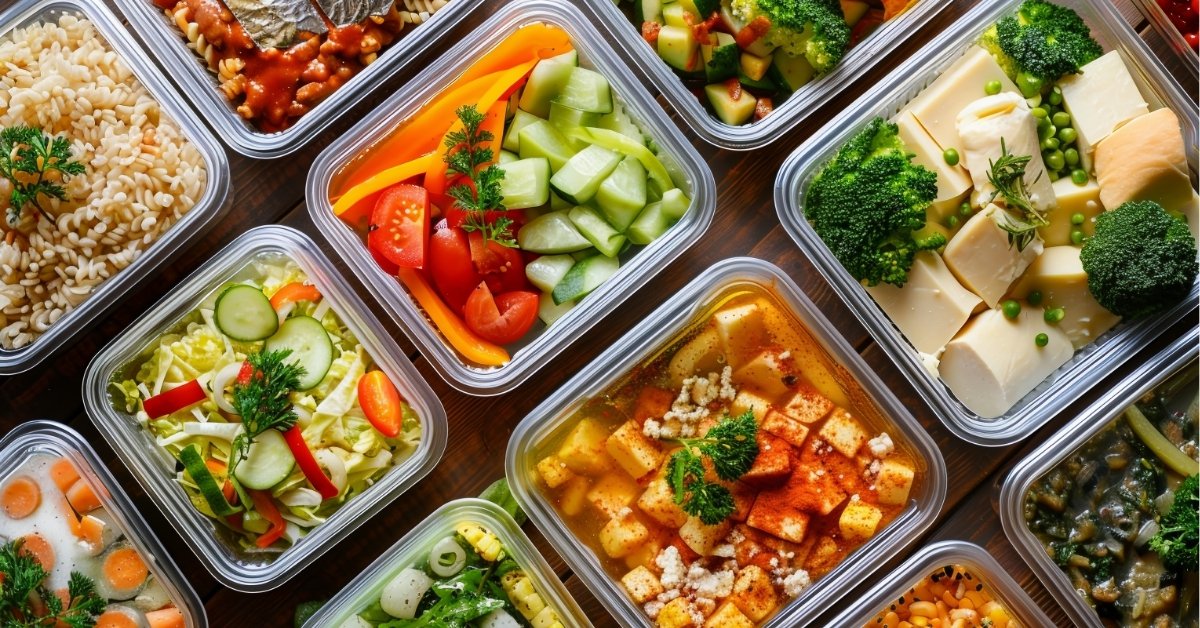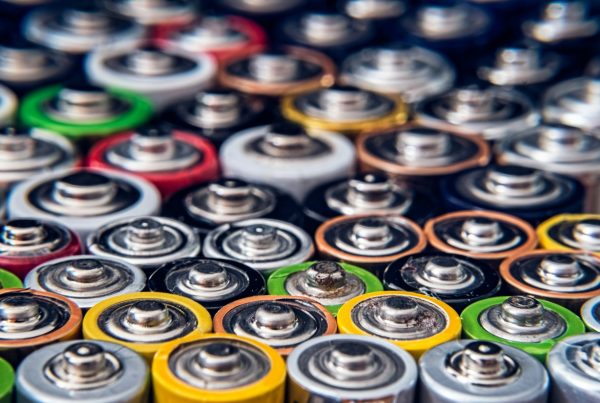The challenge of managing food packaging waste is now a defining moment for UK manufacturing. Manufacturers have the chance to lead by engineering more innovative solutions that meet new regulations, save operational costs, and build a truly resilient supply chain for the future. The challenge is both regulatory and ecological – plastics, glass, metals, and paper that are not recycled or properly disposed of can pollute our land and seas, causing unnecessary harm to the environment.
In 2021 alone, the UK generated an estimated 12.7 million tonnes of packaging waste, with less than two-thirds of it being recycled. Since then, there has been considerable work to build stronger recycling systems that can recycle single-use plastic, and also encourage manufacturers to consider recyclability at the design stage for products and packaging.
However, there’s still a way to go before we can embrace a truly circular economy for all packaging waste. In this article, we'll explore the impact of food packaging waste, the significant challenges posed by plastics, and the sustainable alternatives available.
The Environmental Impact Of Food Packaging Waste
Food packaging waste contributes to poor air quality, ocean and land pollution, and unsustainable resource use. In the UK, packaging materials contribute significantly to municipal solid waste, while their incineration releases emissions and other pollutants into the environment, exacerbating climate change.
Plastic packaging is proving particularly devastating as tonnes of plastic are dumped into our oceans each year, harming marine life. Producing plastic packaging burns oil and gas, releasing additional carbon into the atmosphere. When plastic degrades, microplastics enter food chains, impacting our health.
Key Statistics On Plastic Packaging Waste
Here are some other statistics specifically about plastic packaging waste:
- In 2023, the UK produced 2.2 million metric tonnes of plastic packaging waste.
- A recent study found that 51% of ready-to-eat food and drink products sold in the UK are wrapped in unnecessary plastic. That’s 29.8 billion pieces of plastic each year.
- In a recent report, Greenpeace claim that in the UK, households discard 1.7 billion pieces of plastic packaging each week, or 90 billion pieces annually.
Based on these statistics, we can’t ignore the fact that there’s a problem with food packaging waste. To build a sustainable future, we must keep raising the bar on recycling practices and building effective waste management strategies that move us closer to a truly circular economy.
What Are Common Packaging Materials?
When selecting the right food packaging materials, it’s essential to consider the type of food being packaged, its storage location, and the method of transportation. The main types of food packaging materials are:
- Plastics:
Plastics are used extensively in food packaging because they are versatile, durable and inexpensive. The most common types of plastics are polyethene, polypropylene and polyvinyl chloride (PVC). While they offer excellent protection for our food, they also generate a huge volume of waste that harms our environment. - Glass:
Glass is a good choice for packaging food because it doesn’t leach and doesn’t contaminate the contents. It’s a great choice for packaging drinks, sauces and condiments. It’s also recyclable, which is a significant environmental plus. However, it has a downside – producing and transporting glass requires energy, so it’s not a completely clean and green process. - Paper and Paperboard
Paper and paperboard can be used for biodegradable packaging. They're used for cereals, snacks, and baked goods. However, making paper still requires a significant amount of resources, which is why recycling and sourcing from responsible suppliers is so important. - Metal
Metal packaging, used for tinned foods, drinks and snacks, can be made of many different materials, but the most common are aluminium or steel. The good news is that you can often recycle and reuse metal containers, which can help reduce waste. Producing new, virgin metals involves mining raw materials and energy-hungry production processes, so recycling metal is important. - Bioplastics:
These include materials made from cornstarch, sugarcane, or potato starch – all of which are biodegradable as they are derived from natural sources. However, they require specific industrial composting conditions in order to break down fully, and these are not found in nature or standard recycling facilities.
Regulations And Industry Initiatives
The UK is taking steps to reduce food packaging waste by implementing new measures to reduce plastic and promote sustainable packaging. These include:
The Resources and Waste Strategy outlines a long-term plan to move to a circular economy by eliminating avoidable waste by 2050, aiming to make all plastic packaging recyclable by 2025, and to eliminate food waste from landfills by 2030.
Courtauld Commitment 2030: a collaborative initiative promoting waste reduction and carbon footprint reduction. It supports food and drink companies in improving their packaging choices and reducing their environmental impact, in line with the Resources and Waste Strategy.
UK Plastics Pact: a project bringing businesses, government and environmental groups together to eliminate unnecessary plastics, increase recycling and ensure that new packaging can be recycled.
Best Practices For Handling Packaging Waste
Let's explore practical ways to reduce food packaging waste and protect our environment and health:
- Embrace Sustainable Packaging:
Opt for packaging that naturally decomposes, can be composted, or is recyclable. The good news is that companies are coming up with better options, such as packaging made from plants or that breaks down naturally in the environment. - Design for Reusability and Minimalism:
Focus on packaging that is reusable or employs the minimal amount of materials necessary. - Implement Closed-Loop Systems:
Encourage systems where packaging is returned and recycled with ease, creating a closed-loop system that promotes repeated use of packaging materials. - Adopt Sustainable Waste Management Practices:
Incorporate efficient waste management systems that prioritise recycling, composting, and reducing landfill dependency. This approach mitigates environmental impacts and aligns with sustainable business practices.
How To Manage Food Packaging Waste Properly
To protect the environment and make the best use of precious resources, it's important that we manage food packaging waste properly and recycle where we can.
Proper Waste Segregation And Collection
As a sustainable waste management provider, we understand that effective waste management begins with the most effective sorting practices. We can help by providing expert advice and the appropriate bins to ensure food waste and packaging are appropriately segregated.
If you’d like to read more about our solutions in action, please read our recent case study with Inspired Pet Nutrition (IPN), which details how they diverted 100% of their waste streams from landfill while improving their bottom line.
How Waste Mission Supports Food Manufacturers
At Waste Mission, we help food manufacturers cut packaging waste, boost recycling and reduce costs through innovative waste management.
- Waste Audits & Strategy Development
We look at your current waste to spot ways to cut down, reuse and recycle food packaging waste. - Bespoke Waste Collection & Recycling Services
Effective waste management begins with proper sorting and segregation practices. Our innovative approach to collection and recycling sees your food packaging waste effectively handled, with full tracability, and turning waste into resource whereever possible. - Training & Guidance on Waste Reduction
We provide expert advice and training on reducing waste, choosing sustainable packaging, and complying with UK waste legislation, including the Plastics Packaging Tax and waste reporting requirements. - Composting & Anaerobic Digestion.
- For food-stained packaging that you can't recycle, compostable packaging works well with industrial composting or anaerobic digestion.
- Sustainability & Cost Reduction
By ensuring you get waste management right, we help you meet sustainability targets, reduce landfill waste and lower waste costs. - Track Your Waste Emissions with Our Portal
Our service allows businesses to monitor waste emissions and report on waste diverted from landfill, helping you track your sustainability efforts.
How Businesses Can Reduce Packaging Waste And Improve Sustainability
Businesses can make a real difference in reducing packaging waste and improving sustainability. Here’s how you can invest in sustainable packaging:
- Packaging Audit.
Review your packaging materials and processes to identify areas for improvement. A Packaging Audit helps you identify opportunities to cut waste and reduce packaging material usage. - Sustainable Materials.
Choose packaging materials that are biodegradable, recyclable or reusable. - Reduce Packaging:
Reduce packaging waste by keeping designs simple, eliminating unnecessary elements, and opting for refillable containers. You’ll not only cut waste but improve your bottom line. - Invest in Recycling Infrastructure:
Invest in a recycling setup to ensure that packaging is properly recycled and reused, and ensure all staff are aware of how to recycle correctly. - Educate Consumers:
Educate consumers on the importance of sustainable packaging and how to dispose of packaging waste responsibly.
By making these simple changes, you’ll help drive sustainable packaging forward and reduce packaging waste that harms our environment, and help to build a future that’s a few shades greener. If you’d like to find out how the Waste Mission team can help you make the most of your packaging waste, book a no obligation waste review today.





